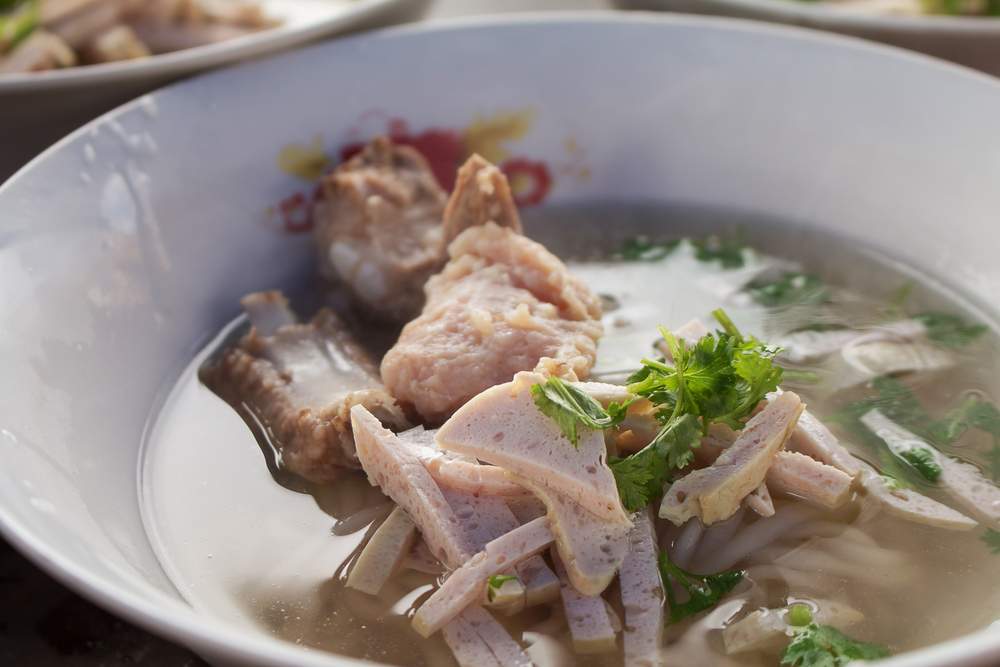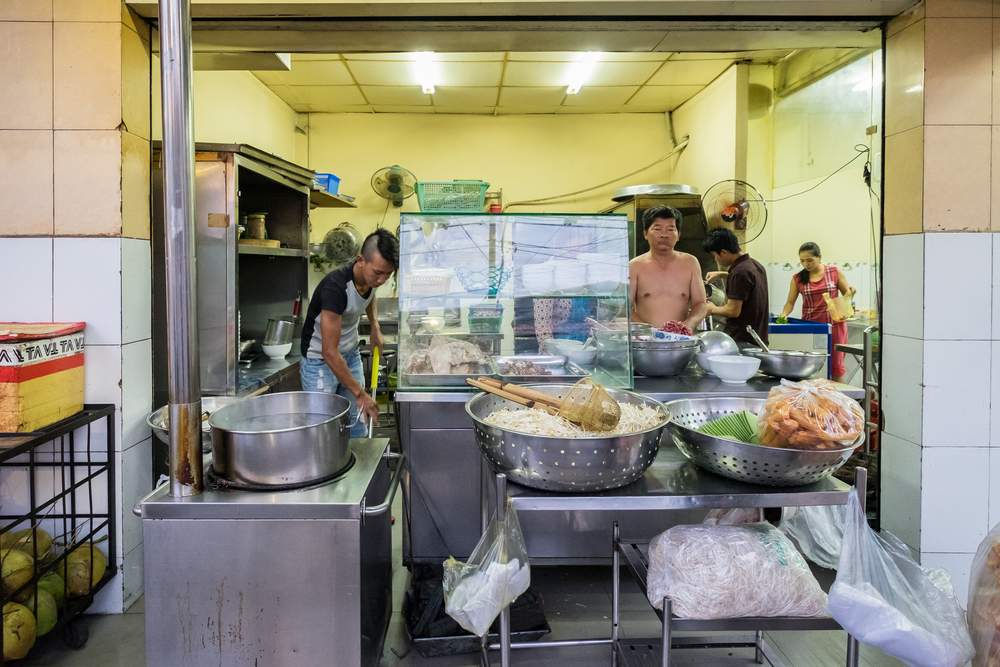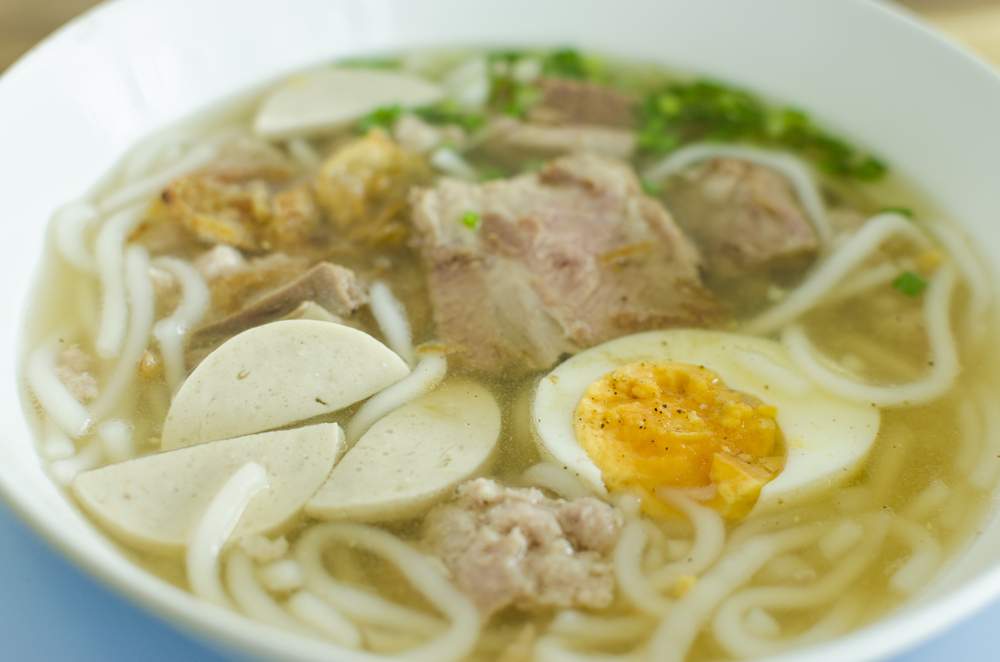“I dunno. How about some fur?”
“Ummmm. You want to eat… fur?”
“Yeah, you know. Vietnamese noodle soup!”
However, this dish with simple beginnings carries the weight of a nation on its shoulders. Chances are unless you’re a serious foodie, you’d be hard-pressed to name any other Vietnamese food. Without the trendiness of Thai or the refinement of Japanese, Vietnamese cuisine has struggled to find a place alongside its Asian neighbors. Pho on the menu’s a good start.
The Origins of Pho

What historians do agree on; however, is that pho got its start in and around Hanoi at the turn of the century. Since Hanoi was still very much an agricultural society at the time, originally pho included turnips and carrots. Charred roasted onions and ginger along with star anise, cinnamon bark, cardamom, cloves and fennel rounded out the flavors.
The Influence of other cultures
Before the French colonized Vietnam, people didn’t eat much beef. More valuable for the fields than the dining table, water buffalo was strictly off the menu. The only exception was when the animal was old or sick, hence, the need to cook it for hours on end. When the French arrived with their imported beef (tender cow beef, not stringy buffalo meat), beef returned to the menu.
With the end of the Vietnam War, the Vietnamese diaspora introduced pho to the world, adding their own twist of serving it in huge bowls (known as “phở xe lửa” or train-sized pho). Some shops back in Vietnam have one-upped with their own “pho tàu bay” or plane-sized pho, but it hasn’t really caught on. After all, who can compete with American-sized portions?
Pho in the family

The restaurant is run by five sisters and their own story traces the story of pho. Their father was originally a farmer from Hanoi who made his way to the South during the French rule. With not much to start out with, he jerry-rigged a cart and brazier and began selling pho on the streets with his then pregnant wife.
Over the years, the daughters took turns watching the cart as he’d bring steaming bowls of pho right to people’s homes. Later, with his brother, he opened up his first pho restaurant, which has now grown to four locations.
“My father took 50 years to perfect his pho. It took me 30. And it’s taken my own children 10. Pho runs through our veins”, says Nga, the fourth of the five sisters as we sit and talk over a wonderfully fragrant bowl of soup. When I ask her if she ever gets tired of pho, being around it 20 hours a day, seven days a week, she replies matter-of-factly, “Never. I still eat it every morning”.
However, in an age where even Knorr makes pho cubes (pronounced Kah-nor, with a hard ‘k’ by locals) and my own mom has sadly resorted to using cans of ready-made pho broth (Mom, say it ain’t so!), apparently there is still no substitute for the labor-intensive homemade taste of pho, evidenced by the steady stream of customers huddled over their piping hot bowls.
Ordering Pho

The next option is what kind of meat you want. The most Western-friendly cuts of meat are the rare, thinly sliced round steak (tái) which goes in raw but cooks in seconds in the boiling broth and the well-done brisket (chín). Equally innocuous are the beef meatballs (bò viên). For the more adventurous, there’s also flank (nạm), fatty brisket (gầu), tendon (gân) and tripe (sách). With major carbs and lots of protein, pho is definitely not a diet food.
While home cooks will often make pho one day, stick it in the fridge and take off the congealed layer of fat the next, pho restaurants don’t have this option. You can skip the fatty top layer of broth by saying “không lấy béo”.
Next come the condiments. While pho restaurants pride themselves on their broth being just right, customers can tweak the taste by making it saltier with fish sauce (nước mắm), spicier using black pepper, fresh chilis, sate or Sriracha-type chili sauce, sweeter with black bean (hoisin) sauce or sourer with a wedge of lime. Often, pickled whole garlic (not recommended for first dates) and fried dough are left on the table.
Finally, what to do with that bewildering tray of vegetables with strange English names like “rice paddy herb” and “sawtooth coriander”? Ignore the unappetizing nomenclature and munch away. Be aware that while very pungent fresh, the flavors will mellow in the broth. Separate the leaves from the chewy stalks, tear up the coriander and throw everything in the broth along with the soybeans (which you can ask for fresh or blanched, making them crunchy or soft).
So, whether you call it “pho”, “fur”, “phan” or “feu”, I call it delicious!
More Pho Tips:
- If you’re ever in Binh Thanh District of Ho Chi Minh City (Saigon), visit the unassuming no-name pho restaurant run by the five sisters at 17B Phan Boi Chau Street, near Ba Chieu Market.
- For a more upscale pho experience, try Pho 24, a quality chain of pho restaurants with branches in Vietnam, Cambodia, Indonesia, the Philippines, and Australia. 24 supposedly indicates how many ingredients are in the pho as well as how long it’s cooked.
- Pho made by northern Vietnamese will typically have less or no herbs with an earthier-tasting broth. Look out for signs that say “Phở Hà Nội” or “Phở Bắc”.
Check out more articles and resources on traveling in Vietnam:
- Vietnam Indie Travel Guide – a 1-page snapshot of long-term travel in Vietnam
- Indie Travel in Vietnam for $30 Per Day
- 12 Reasons Why Southeast Asia is the Best Place in the World for Backpackers
- How to Plan an Extended Trip in Southeast Asia
- How to Have Custom Clothes Made in Hoi An, Vietnam
Read more about James Pham .
Photo credits: Shutterstock.com, Gitisak / Shutterstock.com, Klahan / Shutterstock.com, TonyNg / Shutterstock.com, Suksamran1985 .
